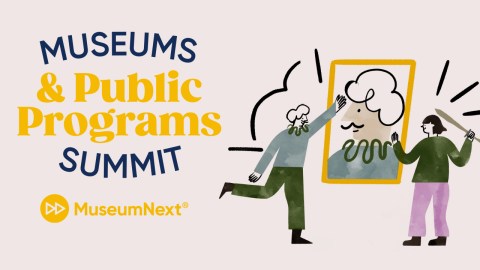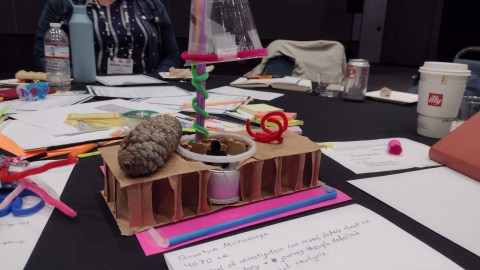
You may have heard of Civic Season, the annual civics-and-history learning sprint held between Juneteenth and the Fourth of July every summer. The program was created by, and is activated by, Made By Us, a network of more than four hundred museums and historic sites across the United States committed to informing and inspiring the next generation with credible sources, shared in creative ways. Civic Season emerged in 2021 as a joint force of museums and young adults teaming up to build a ritual of reflection, connection, and exploration. It has reached more than fifty million Americans in four years, with seven hundred participating organizations that host events, share resources, and drive civic learning.
Museums small and large host programs during Civic Season to cultivate community and foster civic engagement. These take the form of exhibits, walking tours, trivia nights, gallery talks, Slice of History Pizza Parties, graffiti walls, crafting, naturalization ceremonies, voter registration, bird watching, food drives, and more—all with an emphasis on informing and inspiring the next generation.
“Civic Season calls us to remember that self-government is not a spectator sport,” said Dr. Jane Kamensky, president of the Thomas Jefferson Foundation, a founding Civic Season partner and superhost. “We at Monticello are proud to be part of this national movement that invites all Americans to take an active role in shaping our shared future. Civic Season recognizes what the founders did: that a republic depends upon the virtues of all Americans.”
Civic Season’s themes evolve each year to reflect the current needs of Americans in our social and political landscape. As so many museums begin to take on roles as central community hubs, providing space, care, and connection to people around them, it seemed important to capture this energy and make it visible and replicable by other museums.
As a result, this year’s cohort of Civic Season Design Fellows—young adults ages 18 to 30 who serve as the program’s leaders, creators and strategists—have put their heads together on a new resource for museums nationwide: the Community Hub Guide.
“I kept thinking about all the subtle ways spaces communicate who they’re designed for,” said Brooke Tran, 23, from Westminster, CA. Brooke developed the “Gather” section of the guide. “What if museums had more areas like you’d find on a college campus, places to sit, think, and have a quiet conversation? There’s so much thoughtful programming happening, but visitors also need space to pause and reflect, whether on their own or with others.”
Camille Serrano, 26, from Buena Park, CA, contributed to the “Inspire” section and focused on designing for sensory access and storytelling. She conceptualized the “One-Minute Soapbox Speech,’ a one-minute video booth experience where visitors step onto a soapbox to speak up about a cause they care about, inspiring others through a digital activism wall and shareable clips.” She also developed “the ‘Echoes of Change,’ an immersive phone booth where visitors ‘call’ historical figures to hear their stories, then record their own reflections to add to a growing archive of inspiration.”
As the guide came together, the fellows saw how small design choices and community-centered strategies could amplify the impact of existing efforts. Brooke recalled an event called “Hey, We Need to Talk,” hosted by the University of Michigan Museum of Art, that centered around a shared meal. “It brought people together across differences in a natural way,” she said. “Sometimes it’s less about formal programming and more about creating the conditions for meaningful connection.”
Both fellows have advice for institutions looking to take the next step. Camille emphasizes the power of partnerships. “Reach out to local schools—especially departments like art, history, or social sciences—and invite them into your space in a way that feels collaborative,” she said.
Brooke added, “If you have the capacity, create a youth advisory board. Many museums already do this for programming. It’s a great way to bring young people into the process and hear directly from them.” (Made By Us also offers a complete guide to creating a Youth Advisory Board in its Youth250 Toolkit.)
Flip through the pages of the Community Hub Guide, which is at its core an invitation to get started, even with incremental steps. If your museum is ready to join Civic Season this summer, you can find the Community Hub Guide and many more resources at TheCivicSeason.com/Join. You’ll also have an opportunity to add your resources to the website, where others can discover them; build your own curated Civic Season List; and check out the quizzes, badges, and guidebooks available on the website.
We hope to see you this summer—celebrating our community hubs!







